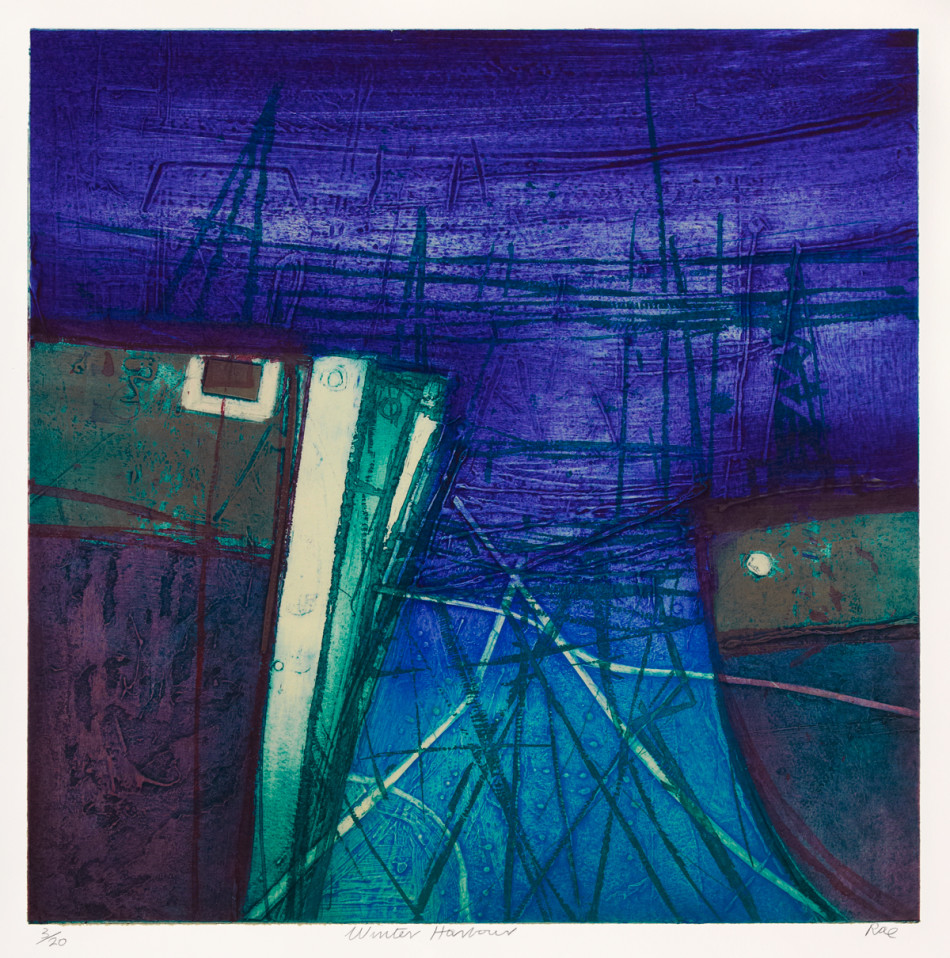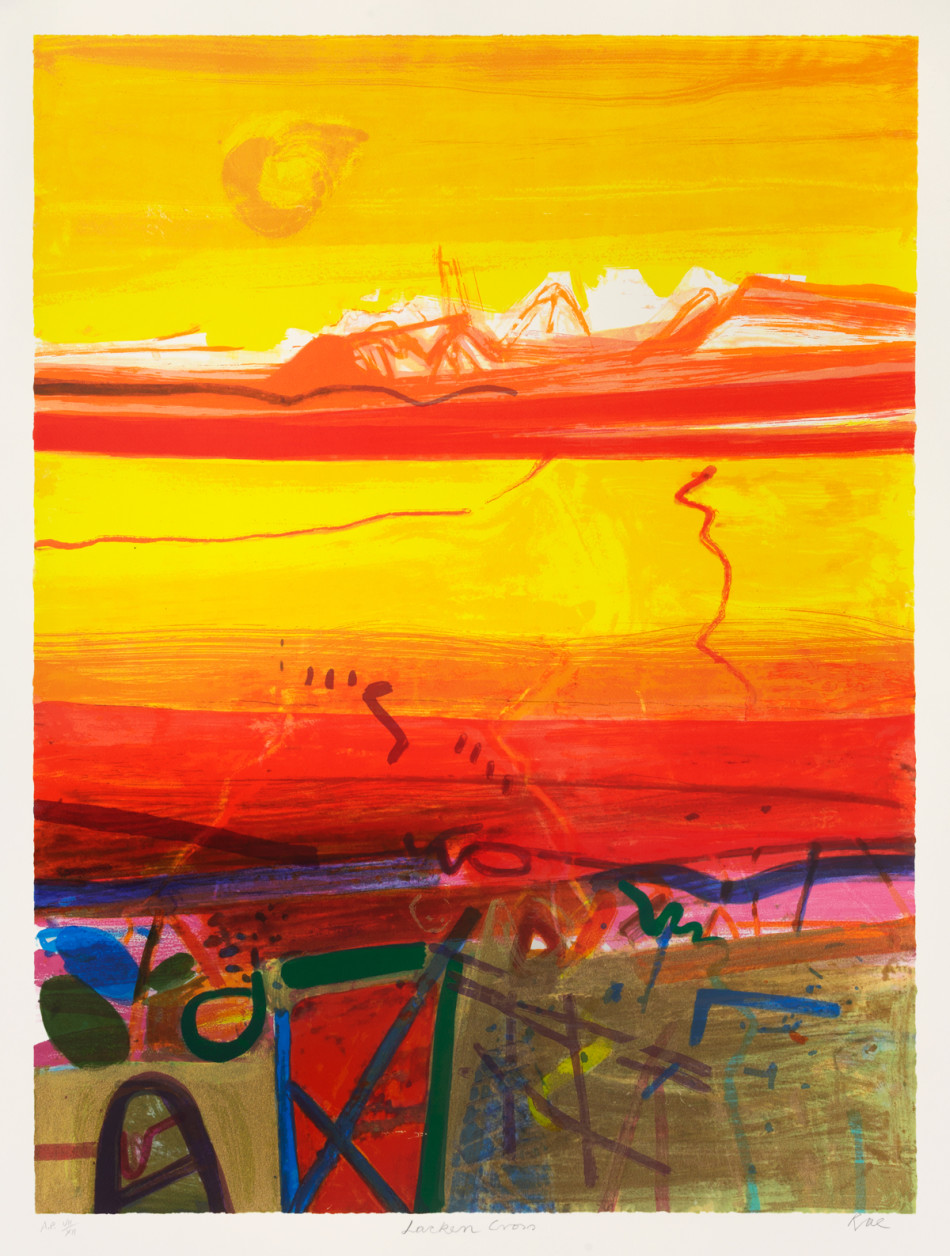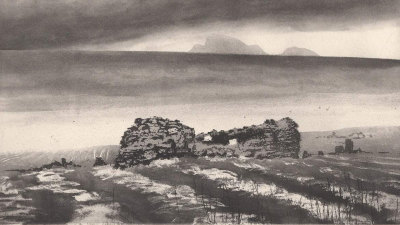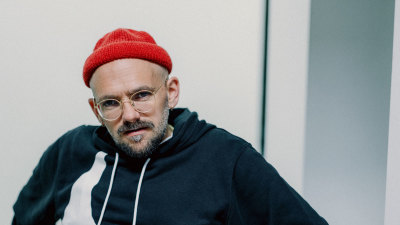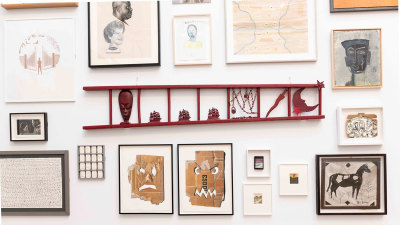10 minutes with… Barbara Rae RA
10 minutes with… Barbara Rae RA
By Harriet Baker
Published 17 December 2015
The artist tells us why she is inspired by Arctic explorations and the Scottish coastline in winter light.
-
Barbara Rae RA is interested in maps, geography, topography and local history. Her paintings – dynamic colourful abstractions – engage with the landscape and its complex social history. She often works on the west coast of Scotland, in Ireland and in Spain, and recently travelled to the Arctic on the trail of a 19th-century adventurer.
Rae studied at the Edinburgh College of Art in the 1960s, where she won a travel scholarship, enabling her to work in France and Spain in 1966. She has held numerous teaching posts in Aberdeen and Glasgow, and lives and works in Edinburgh.
We caught up with the artist to find out why she keeps returning to coastal landscapes for inspiration.
What are you working on at the moment?
I’ve been busy selecting work for the new Art Sales exhibition, which is currently on display in the Keeper’s House. It’s titled Between the Land and the Sea. I thought about all the artists I admire who are influenced by coastal regions in some way or other – though they’re not necessarily landscape painters – and I realised that many of them were connected with the Glasgow Print Studio. The studio attracts talented printmakers, such as Murray Robertson. He has just completed a year’s residency in Skye. In that time he’s learned Gaelic and become influenced by the Celtic mythology and archeology, which is understandable because it’s all around him in that beautiful place. I’ve brought together 20 other artists in the exhibition, with the invaluable help of Art Sales Programme Curator Katherine Oliver.
I’ve always been fascinated by the sea. The light draws me there, particularly in winter when the sun is low. Being attracted to the Highlands, I inevitably became aware of the Highland Clearances – over a hundred years of evicting tenants off the land from their villages to make way for sheep. When they reached the coast, the conditions were inhospitable and many were forced to emigrate to the Americas, and to Australia.
I spend a lot of time working in the west of Ireland, a place that holds a similar social history. Today, you can see houses dotted all over Irish hillsides that you wouldn’t find in Scotland, where large estates, empty of people, are still in the hands of a few wealthy landowners.
It’s not just scenery that I’m drawn to, but the history of the landscape itself and the way in which it bears the marks of poverty and hardship. It’s very important to me that I’m conscious of the history when I’m creating my studies; how the people there shaped the land. This includes their houses, and where and how they grew their food – all the things they needed in and around them to survive.
-

Barbara Rae RA, Winter Harbour, 2015.
Edition of 20 at £1,850
View or buy the work online.Etching / collagraph. Image size: 59 x 59cm; paper size: 90 x 76cm. © Andy Phillipson/livewireimage.com.
-
My recent journey to the Arctic and the North West Passage had the same attraction. I was following Dr John Rae, who worked as a doctor for the Hudson Bay Company, and was commissioned by the Admiralty here to search for Captain Franklin’s lost expedition to the Arctic in 1845. With his knowledge of the local Inuit people’s language, Rae discovered Franklin’s two ships had got stuck in ice and sank, the remaining crew perishing from pneumonia and starvation.
I was with a tour of scientists and naturalists that flew from Ottawa to Greenland, where we joined a boat that sailed past icebergs, polar bears and narwhals. I took a lot of photographs – though I don’t work from them – and I hiked and kept notebooks filled with sketches and rough paintings, usually created in my cabin. On my return to my Edinburgh studio I began work on a series of monoprints. Now I’m working on the large scale images, the paintings.
What is your earliest memory of art?
I remember going to stay with my grandmother in Falkirk. A bus ride there from my parents’ home in Crieff took a route through a mining area. I was intrigued by the mines and the buildings and machinery around the pits. I tried a few paintings when I reached my grandmother’s house.
What work of art do you wish you’d created?
Velázquez’s Las Meninas and Picasso’s Guernica. Picasso was masterly in the way he could develop an idea. The series of paintings he did in response to Las Meninas is proof of his ability. With the exception of the American painter Diebenkorn, all my favourite artists are Spanish: Miró, Tàpies, Picasso, Velázquez, Goya. Goya was a key artist to study in my student days. We did a lot of life paintings. I experimented with tonal values like Goya, paring down my palette.
-

Barbara Rae RA, Red Field-?eide, 2014.

Barbara Rae RA, Night Beach, 2015.
-
How do you know when a piece of work is finished?
Knowing that comes from experience, and learning from past mistakes. Aspiring artists tend to hang on to a painting; it’s comfortable to keep on painting, rather than making a decision to end it and move on to the next. A blank canvas or sheet of paper can be intimidating.
For my own part, I know there’s nothing more to say when my energy flags. People tend to think that time taken equals success, but this isn’t a guarantee. Some work needs time to evolve, but other pieces can be created in short order so long as you’ve put in the required preparation. I work on two or three images at one time, to stop me getting too precious about one.
What music inspires you in the studio?
When I’m working in Ireland I listen to the Irish radio – they’re great talkers. I listen to Sinead O’Connor – she’s published a whole CD of Irish folk ballads. When I’m working in Spain, I listen to classical Spanish guitar music, or tangos.
Where were you when you found out you’d been elected an Academician?
I was in my old studio in Edinburgh – a modest, fairly basic studio with a concrete floor and a wood burning stove to keep the chill of Scottish winters at bay. Piers Rogers (a former secretary of the RA) called me. I was thrilled. I had a small bottle of champagne in the studio and opened it immediately!
-

Barbara Rae RA, Lacken Cross, 2011 Screenprint.
Edition of 125 £1,250.
Image size: 80 x 60 cm. Paper size: 102 x 77 cm. © Andy Phillipson/livewireimage.com.
-
What does the RA mean to you?
It means a community of highly talented artists. Personally, I’ve made friends with so many people I’d otherwise never had met. The camaraderie, the social interaction, but above all the artistic collaboration, is very stimulating, especially the group endeavour that produces the annual Summer Exhibition.
If you were president of the RA for a day, what would you do?
That’s a hard question to answer. The institution is so big these days it’s hard to see the edges of its output. Knowing how I like to socialise I’d probably organise an occasion so Academicians can meet staff, normally out of sight working hard in their offices. I’d also like to find a convivial way of reminding colleagues why we’re here – the marvellous enthusiasm of the public that spurs us to greater effort. The public has the greatest role in what the RA does.
What is your advice to aspiring artists?
Work hard and study lots of potential subject matter. Attaining expertise is more than just acquiring basic technical skills. It comes down to a way of seeing – the great painters developed a unique vision. Every artist needs a creative vision.
Between the Land and the Sea is in the Keeper’s House until 24 April 2016.
